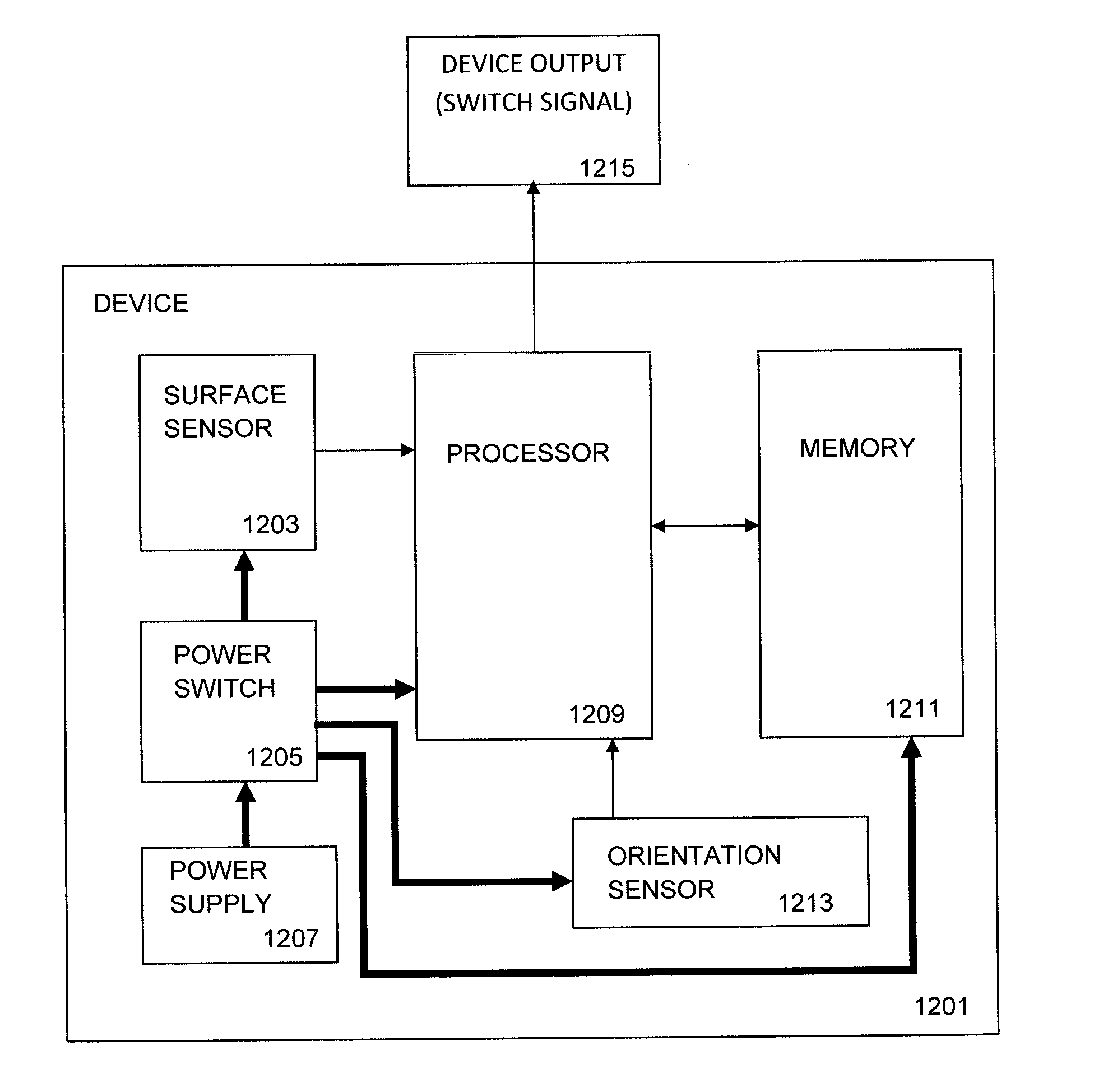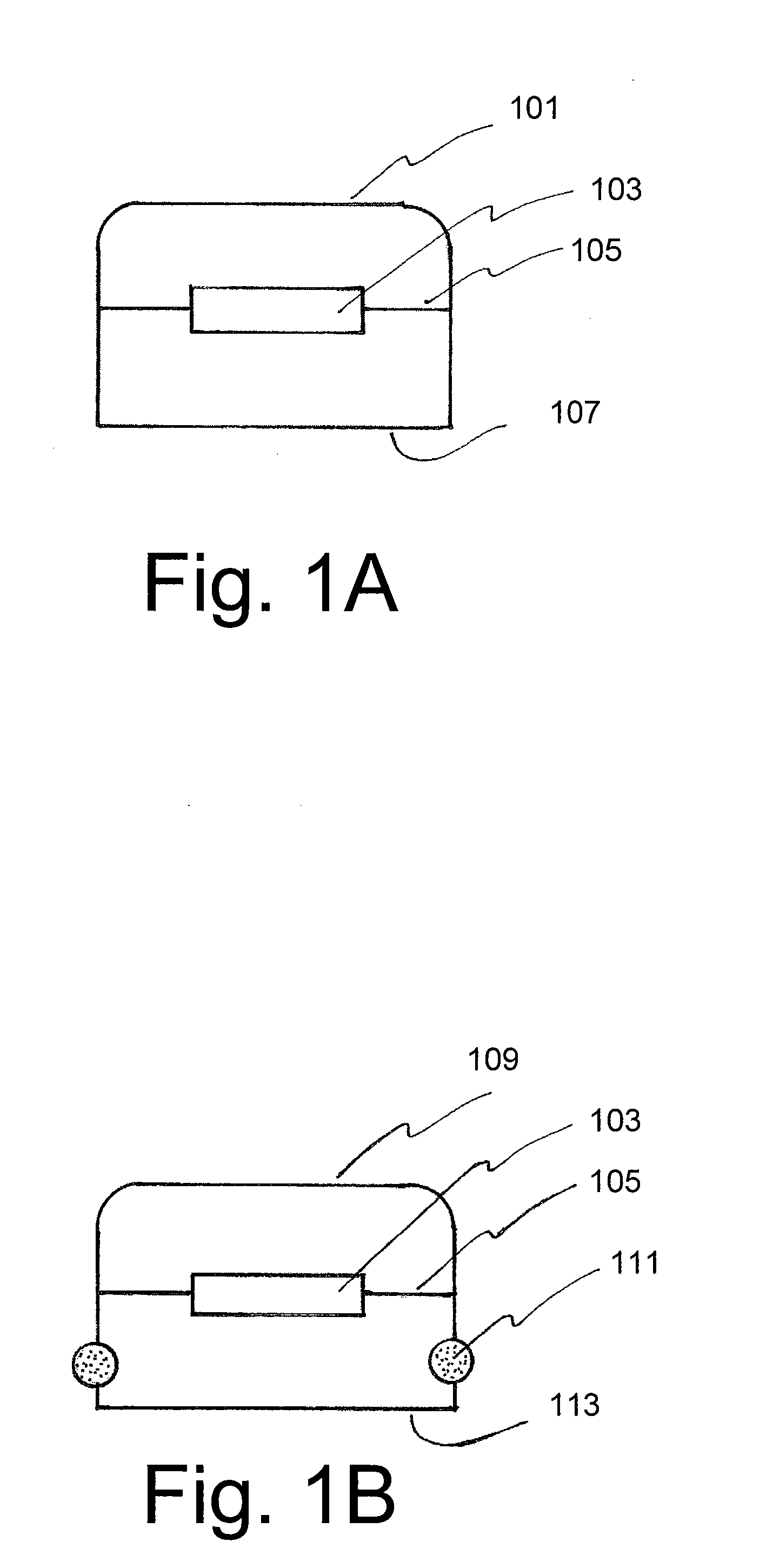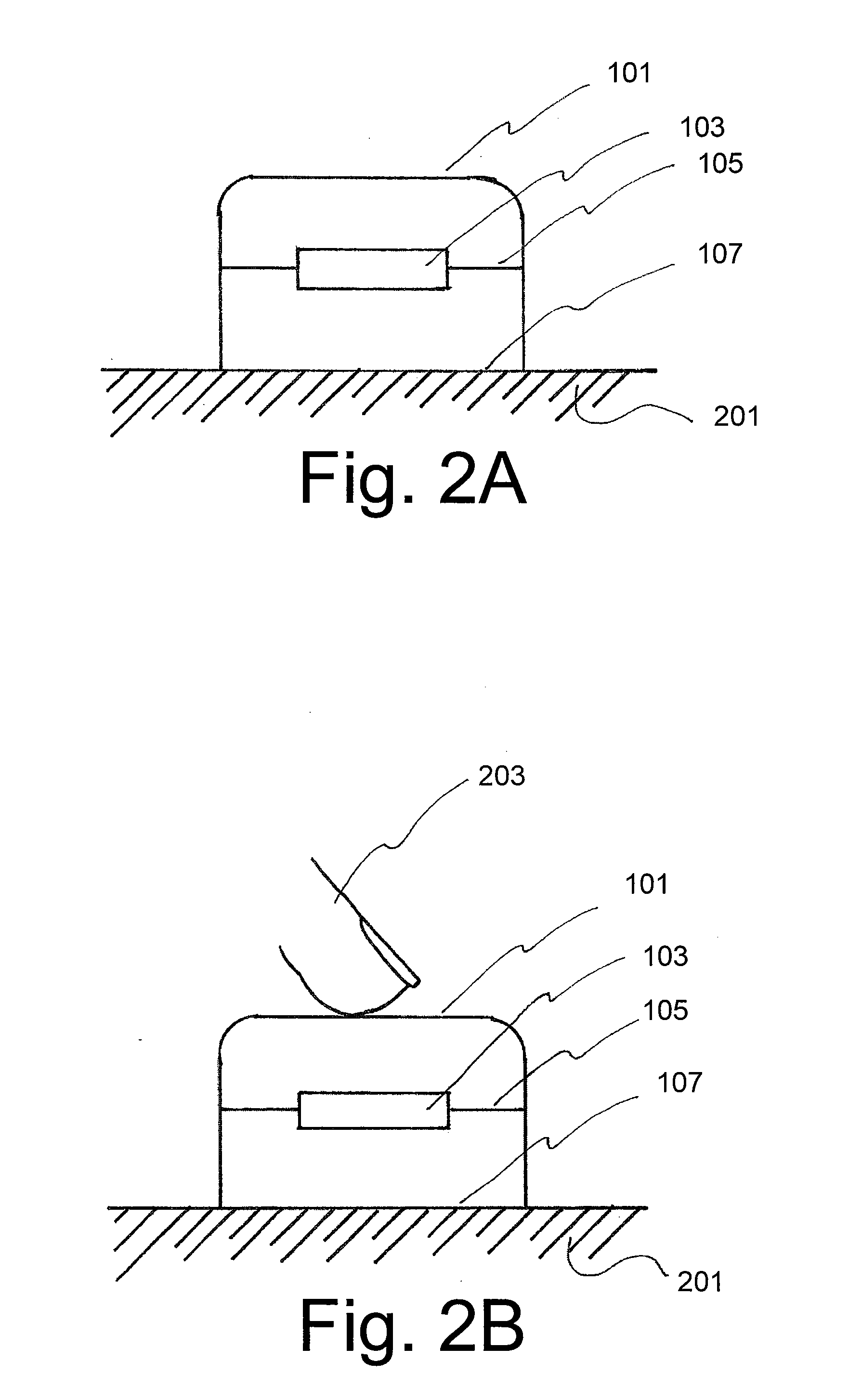Housing For An Inertial Switch
- Summary
- Abstract
- Description
- Claims
- Application Information
AI Technical Summary
Benefits of technology
Problems solved by technology
Method used
Image
Examples
Embodiment Construction
[0049]Certain terminology is used herein for convenience only and is not to be taken as a limitation on the present invention.
[0050]FIG. 1A is a cross-section of a device that incorporates an accelerometer, but does not embody this invention. It is most easy to visualize this figure as representing a cellular telephone or an MP3 player. However similar figures with the same components, but at different scales could be drawn to represent other devices with accelerometers. The device has a rigid casing or housing 101. If you set it down on a table, a portion of the casing 107 would be the part placed against the table. In this figure one thinks of 107 as the bottom of the device, but that would be as accurate in a similar figure in which 107 is not a straight line. The device also includes an accelerometer 103 which is attached at 105 to the housing so that movements in the housing would move, affect, and register with the accelerometer.
[0051]In contrast to FIG. 1A, FIG. 1B is a cross...
PUM
 Login to View More
Login to View More Abstract
Description
Claims
Application Information
 Login to View More
Login to View More - R&D
- Intellectual Property
- Life Sciences
- Materials
- Tech Scout
- Unparalleled Data Quality
- Higher Quality Content
- 60% Fewer Hallucinations
Browse by: Latest US Patents, China's latest patents, Technical Efficacy Thesaurus, Application Domain, Technology Topic, Popular Technical Reports.
© 2025 PatSnap. All rights reserved.Legal|Privacy policy|Modern Slavery Act Transparency Statement|Sitemap|About US| Contact US: help@patsnap.com



